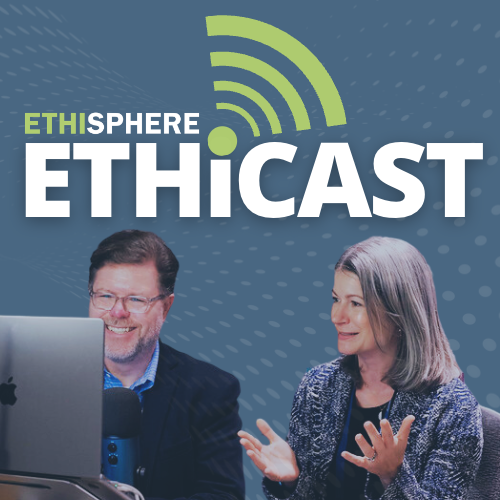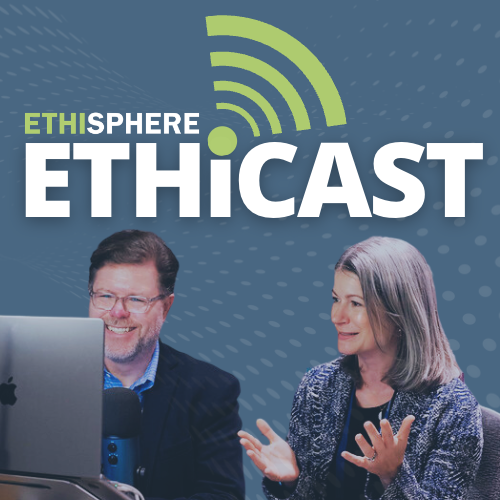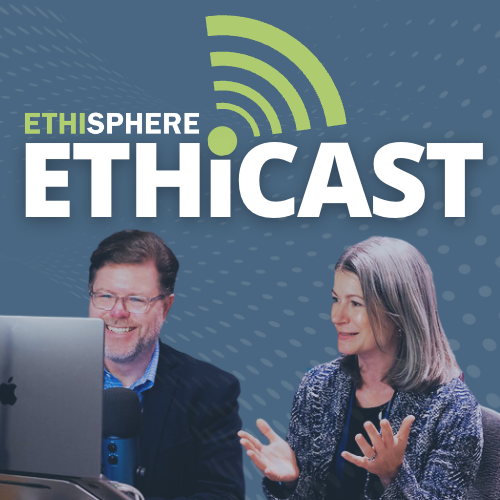[00:00:00] Speaker A: Hi everyone. The Business Ethics Leadership alliance has questions and we have answers. I'm your host, Bill Coffin. Welcome to another BELLA Asks episode of the Ethicast.
The Business Ethics Leadership alliance, or bella, is a global ethics and compliance community that provides exclusive access to helpful data, program benchmarking, roundtable events, and a resource library with hundreds of policy guidance documents, member contributed program examples and more. But one of the most popular aspects of BELLA membership is our concierge service in which members can submit any question at all regarding ethics and compliance and our internal experts will provide an answer and helpful resources with further information.
And while we invite everyone watching and listening to join bella, we we also know that there's no competition in compliance, which is why we're using this program to thematically respond to high level questions from the BELLA community for the benefit of ENC teams everywhere.
And joining us once again to answer those questions is Bella chair Erica Salmon Byrne. Erica, thank you so much for joining the program once more.
[00:01:11] Speaker B: Absolutely. Bell it is my pleasure. Although I am feeling at this point, I think we're approaching about 50 Bella Ask episodes at this point and I feel like I need a new greeting. So I'm going to stop saying it's my pleasure and I'm going to come up with something else. But it remains my pleasure.
[00:01:26] Speaker A: Outstanding. Well, look, our next question is a communications question and it reads, how do I plan a fraud communications campaign?
[00:01:34] Speaker B: Yep.
So Bill, the first thing I would start with always as is is my want is why do I plan a fraud communications campaign? What is driving this particular BELLA member or a member of our community that is out there listening to you and I right now to think about fraud as a risk and specifically to think about the ways in which they would like to make employees aware of the possibility of fraud and the fraud prevention mechanisms that the organization has in place. Maybe this particular organization is being driven by some of the changes that are coming in the United Kingdom in response to the Transparency Act. So that is going to be a situation where there will be a new corporate offense in the UK of failure to prevent fraud. That would cause me to think about planning a fraud prevention campaign.
Or maybe there's something else going on in your industry segment and you're just noticing that this is a particular risk, whatever it is that's driving you to think about fraud as a communications topic. You want to start with that. So I'm going to plan based on raising employee awareness of the three most likely types of fraud that could happen in my organization. I'm going to then Go to my triangle of communications, which of course is messenger. Right. Who is the right messenger to carry this message? Message. Am I going to break this into three different communications? Am I going to do this all at once? Am I going to use storytelling? Right. What is the delivery that I'm going to use for this particular piece of learning that I'm looking to get out into my employee base? And then finally, modality.
Are people more likely to listen to this? If I deliver it as a podcast, should I send it as an email spoiler? Probably. No. But maybe I want to do it as a blog post if I've got a newsletter going inside my organization. Maybe I want to give managers some talking points on fraud prevention at particular points in the calendar year. All of those things, Bill, you know, I delivered them in the context of a fraud communications campaign, but they apply to any risk topic. Right. You could use those exact same principles to plan your gifts and entertainment campaign, to plan your conflicts of interest disclosure campaign, to plan your responsible use of AI campaign, to plan your phishing campaign. Right. Whatever risk areas you might be dealing with as an organization, the those basic principles apply. What's the learning outcome I'm looking for from my employee base? Right. What's my. Why? What's driving the fact that this is on the table in the first place? How do I leverage the way that people learn? And how can I use the three points of the messaging triangle to make sure that my message is going to land with the audience I'm delivering it to?
[00:04:21] Speaker A: You know, one of the things that we hear so often in this space is, you know, one size did not, in fact, fit all. We hear that on programs all the time. And I have to say, as somebody in the communications business himself, I loved how you kind of touched on the modality piece and how, you know, one modality is not fit all either. You may, you know, when you're a podcaster, everything looks like a podcast, right? When you're. And when you're an editor, everything looks like a magazine. But the truth is every audience has its ideal way to reach them, and it really pays to. You can have the same message across multiple modalities, and that way you make sure you're not leaving anybody behind. Folks production floor may be reachable in ways that people in your back office are not.
[00:04:56] Speaker B: Yeah, and, and Bill, that is such an important point for companies that are thinking about communications planning in, you know, for the beginning of this year, you can send the same message through multiple modalities. In fact, I'm going To revise that statement, you should send the same message through multiple modalities because you don't know which modality is going to catch which part of your employee base. Now you can have a hint of what's going to catch which part of your employee base because there's a lot of data available to us of who listens to what how. Right. Like you and I know who's listening to the audio only of the Ethicast versus who's watching us on YouTube. And you know, as a communications professional inside of an organization, you can know the exact same thing. Right. Which of my employees are reading this content in a blog post? Which of my employees are watching a video? Which of my employees have turned on closed captioning on the video because it's easier for them to take information in that way. So the video might be playing, but I'm actually reading the words. The more information you have about the ways that employees across your organization are interfacing with messages, no matter who's sending the message, the better. Because then you can really say, okay, this is a, you know, these are my top five risk topic priorities for the year. I know that my employees engage with the TV message in the elevator bay, the blog post that I put on our SharePoint site, and the short form videos that I drop an email in descending order. Great. Right. Plan it that way that, you know, these are my top five. They're getting all three. These are my next two. They're just going to get one. Oh, this is a topic area that only applies to this one part of my business. I'm going to figure out what that one part of my business, how that that part gets information, and I'm going to target my message using that modality exclusively. So talk to your comms team, talk to your IT team, get all the information you possibly can about how employees are actually getting messages from the company as a whole of all shapes and sizes, and then plan your campaign on a risk topic basis to try to capture as many of those employees as possible with the messaging that you're putting out.
[00:07:08] Speaker A: Well, Erica, once again, thank you so much for coming onto the show and sharing your insights with us. I know everybody in the Bell community and the wider ENC community really appreciate it. Thanks so much.
[00:07:17] Speaker B: Absolutely, Bill, it's 100% my pleasure. And to all those Bella members out there that are listening to us right now, please keep those questions coming. Right, Bill and I love to see new Bella ask questions coming in. So whether you send them in as a concierge request or you want to drop them right to us as Bella asks, please keep them coming so that we have an opportunity to come back and talk them through together.
[00:07:39] Speaker A: To learn more about Bella, please please visit ethisphere.com bella to request guest access to the member resource hub and to speak with the Bella Engagement Director. And if you have a question that you would like answered on this program, contact the Bella Concierge Service and we'll get to work on it for you. I'm Bill Coffin and this has been another Bella Asks episode of the Ethicast. If this is your first time listening, we hope you've enjoyed the show. For more content like this every week, please subscribe here on YouTube, Apple Podcasts or Spotify. You can also get our free weekly
[email protected] ethicast and we've got plenty more content for
[email protected] resources. Thanks so much for joining us. And until next time, remember, strong ethics is good business.


